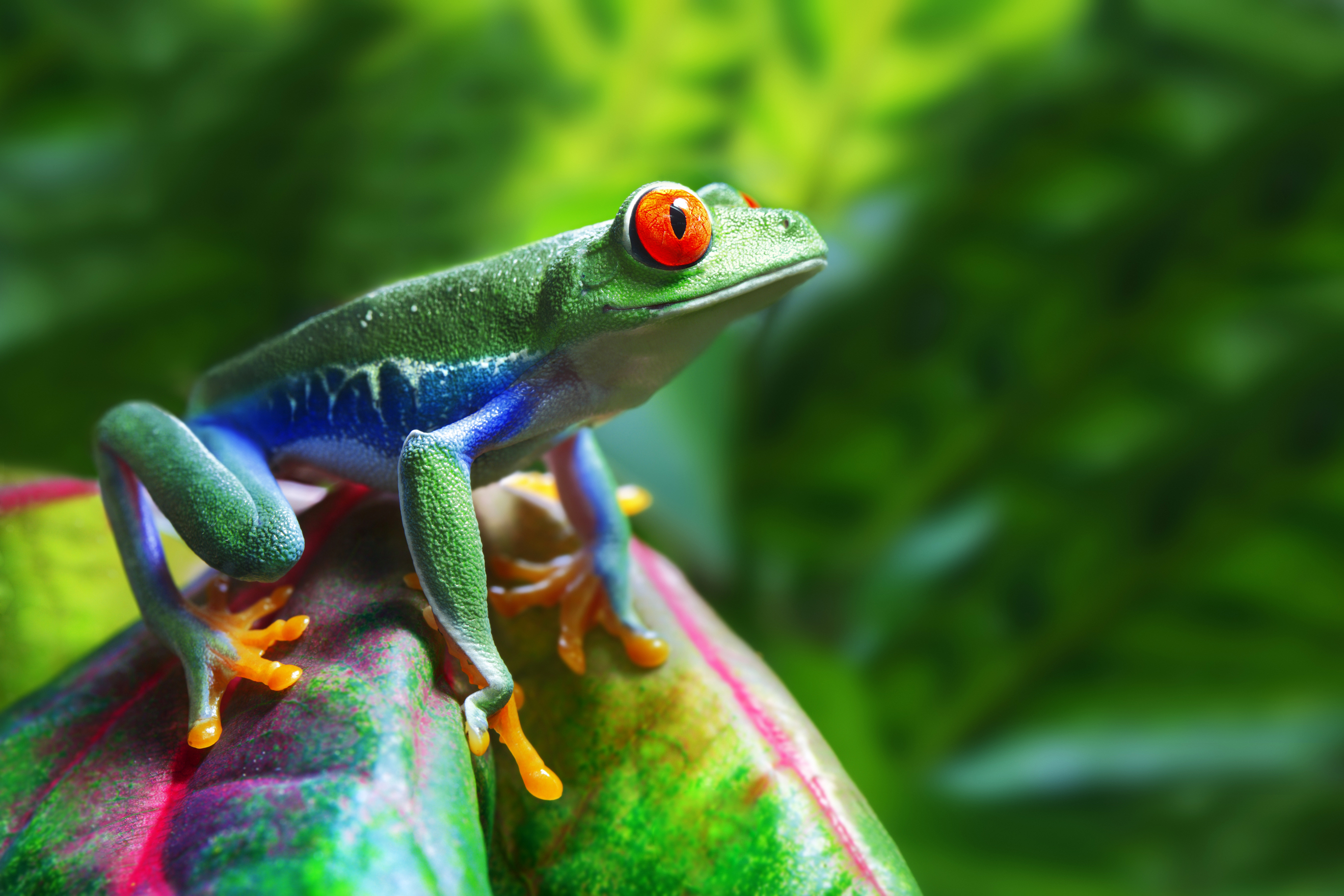Red-eyed tree frog is a colorful frog known for its large red eyes and bright green skin. The frog’s striking appearance has made it a popular pet. It also is a favorite subject of wildlife photographers. The frog lives in tropical rain forests, from northwestern Colombia to Mexico.

The red-eyed tree frog is slender with long legs. It has a pale underside and bright green back. The undersides of the legs are blue. The sides of the frog are blue to purple, marked by light stripes. The feet are bright orange. The frog reaches about 2 to 3 inches (5 to 8 centimeters) long. It weighs less than 1 ounce (28 grams). Females are larger than males.
The red-eyed tree frog is a strong climber that spends most of its time in the trees. The feet have wide pads on the toes that grip the bark. The frog is active mainly at night. Its red eyes provide keen night vision. The eyes may also startle predators (hunting animals), giving the frog a chance to escape. The frog eats mainly insects.
The red-eyed tree frog breeds during the rainy season. After a big rain, males gather around ponds or other bodies of water and call throughout the night. The call sounds like a series of “chack” sounds, which may be followed by a “chuckle.” These calls attract females and also warn away competing males. Females appear at the ponds later and then choose a mate based on his calls.
Females deposit jellylike egg masses on the underside of leaves that overhang the water. Each female may lay more than 200 eggs, in clutches of 25 to 50 eggs. After about a week, tadpoles hatch and fall into the water. In another two to three months, the tadpoles develop into froglets, through a process called metamorphosis. Metamorphosis is the transformation into adult form. The froglets then grow into adult frogs. Females live for up to three years in the wild. Males usually do not live as long. Although red-eyed tree frogs remain abundant, their numbers have fallen. They are threatened mainly by habitat destruction and disease.
